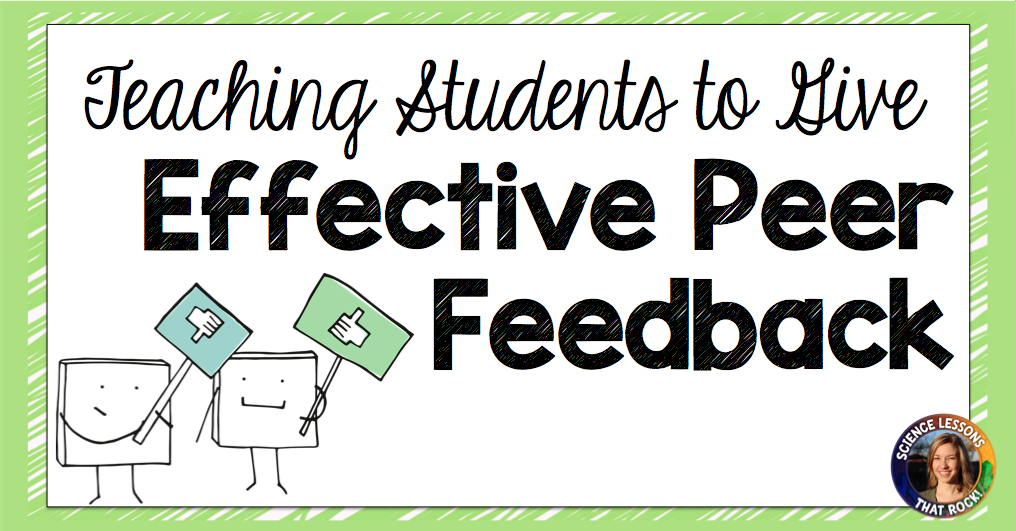“Why did you do that?” or
“It’s just wrong.” or
“It’s good” (even when it’s not).
Teaching students to give effective feedback is hard and takes a lot of student practice. And then more practice. If you are using project based learning in your classroom, peer feedback is a vital part of the process (you can read more about PBL here). But it’s worth it when you get to the point where students give feedback that is meaningful and actionable, and you are receiving higher quality work at the end. It’s going to save you a lot of grading time!
So, where do you begin?
1. Always begin by modeling what good feedback looks like.
Pass out a sample lab report, essay, or whatever assignment your class will be completing. Walk the students through the strengths and weaknesses of the assignment, and show them that feedback needs to be specific in order for the person to improve. Show them how it is possible to be honest and be kind at the same time.
2. Don’t ask them to give feedback on everything all at once.
It can be overwhelming if a student gets back their lab report or essay and it is covered from top to bottom in red pen. Instead, beak it down into smaller chunks. On the first round of feedback, have students look for and highlight the thesis or hypothesis and write in tips to make it more clear. On the second round have them look for and highlight supporting details or data and write in any clarifying questions. On the third round they can check for grammatical errors…. you get the picture. By breaking it down into smaller, manageable chunks you are making it easier on both the student giving the feedback and the student receiving the feedback.
3. Feedback should be actionable.
Make sure that if students leave comments, they need to be actionable. If they just write “paragraph needs work” in the margin, that isn’t helpful. Why does it need work? What specifically needs to be improved? If the feedback isn’t clear, the author of the assignment can go back and ask “What did you mean when you wrote this?” and get some clarification.
4. Feedback should be timely.
One mistake is waiting until the very end of the assignment or project to do a round of peer evaluations. If the assignment is due on a Friday and you wait until Wednesday or Thursday to give feedback, it can be too late. Students are busy after school with jobs and sports and need time to make edits. By giving feedback multiple times along the way, it will save them a lot of frustration and time at the end. Also, plan ahead and build in class time for editing instead of having them do it all at home.
5. Feedback can be anonymous.
Sometimes students don’t want to offend or hurt feelings when giving feedback, so they only leave nice comments instead of being completely honest. By providing methods of anonymous feedback such as sticky notes, gallery walks, or removing names and numbering the papers instead, you are allowing students to be more honest in their critique. That being said, you are opening the door to negative comments as well. Be sure to go over expectations with students prior to the activity, and if problems do arise, have a way to track down the offender (try different pen colors or group them in small groups to narrow down the possibilities).
I love this video of “Austin’s Butterfly” and show it to my high school students even though it is of elementary kiddos. It shows the process of giving feedback where “they were specific but they weren’t mean about it.”










